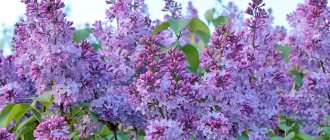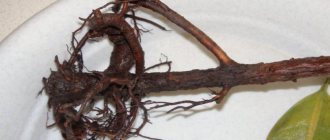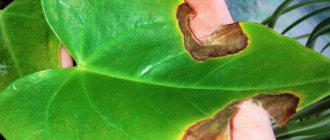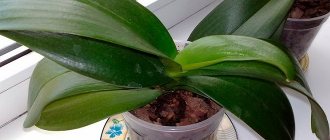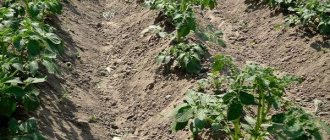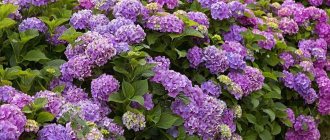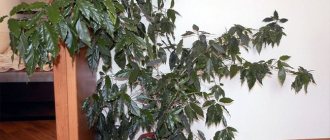Any garden should be decorated with flowers. And the brighter and more magnificent they are, the better. Most often, roses, peonies and other popular flowers are used to decorate a dacha or home. Rhododendron is a rather unpopular plant among gardeners. The main reasons that it is not very popular are its capriciousness in cultivation and its heat-loving nature, which is why it requires a lot of attention. If you don't take proper care of your rhododendron, you may not see it bloom. But, if you show patience and diligence, growing such a flower can become an exciting activity.
Description of culture
Rhododendron belongs to the Heather family. It can be deciduous, semi-deciduous or evergreen, indoors or outdoors. The name of the plant literally translates as “tree with roses.” Some varieties of rhododendron can grow up to a height of 30 cm. Currently, about 3,000 species of this flower are known in the world.
Gorgeous rhododendron - a very capricious shrub
For your information! About 20 species of rhododendron grow in Russia. They are common in mountainous areas, but in the flat part of the country they are not found at all.
How long does rhododendron bloom?
Depending on the plant variety, the timing of its flowering may vary. Some species bloom in April, most evergreen varieties begin to bloom in early May. But, in addition to the species characteristics, the following factors can also influence the duration of flowering:
- the climate in which the flower grows;
- ambient temperature;
- illumination of the planting site;
- quality and nutritional properties of soil;
- age of rhododendron.
Flowering shrubs cannot be compared with anything
Note! The duration of flowering of the plant can be from 16 to 20 days. Particularly hardy varieties are known that can bloom for 45 days.
Why do brown leaves appear?
Browning of leaves is a common symptom that occurs as a result of errors in care or the appearance of a dangerous disease. You need to intervene quickly if the plants need to be saved. Below are the 5 most important causes of brown leaves.
Inadequate fertilization, element deficiency
Rhododendrons need a lot of nutrients. Deficiency is quickly detected as foliage discoloration. The effects of individual element deficiencies are often mistaken for symptoms of illness or freezing. You need to learn to identify them.
Table. Signs of element deficiency, photo
| Photos of symptoms | Element deficiency |
| When brown spots appear on the edges of the leaf blade and yellowing of the tissue between the veins, this is a sign of potassium (K) deficiency. | |
| Brown-red spots on the edges of the leaf blade are a symptom of a lack of boron (B). | |
| A brown leaf blade may indicate a lack of phosphorus (P). | |
| Phosphorus deficiency | |
| Nitrogen deficiency | |
| Iron deficiency |
To ensure the availability of missing elements, you need to:
- take care of acidic soil (pH 4.5-6.0);
- use fertilizer mixtures specifically designed for rhododendrons;
- if the soil pH rises too high, acidifiers are used;
- Mulching the soil with acidic pine bark helps.
Rhododendron leaf spot
The plant often suffers from leaf spotting. This disease is caused by various types of fungi. The development of the disease occurs gradually. Initially, brown spots appear on the edges of the leaves, then spread over the entire surface. The spots can merge into one and scatter over the surface of the leaf.
Leaf disease can be easily removed with Topsin M 500 SC. To prepare the spray, dissolve 1 ml of Topsin in 1 liter of water. Spraying should be repeated after 14 days. As an alternative to Topsin or preventatively after curing rhododendron, the natural enhancing drug Biosept Active should be sprayed.
To prevent recurrence of infection, grow rhododendrons in the most favorable soil conditions and provide proper fertilization. Shrubs are mainly weakened by fungi that cause leaf spotting.
Leaf browning caused by late blight
Phytophthora symptoms appear on the shoot tips of rhododendrons and other members of the heath family (Ericaceae). The disease develops when there is excess moisture in the soil.
- initially the petioles at the base become brown;
- then brown spots spread throughout the entire leaf blade;
- sometimes brown spots appear in different places and gradually increase in size;
- brown spots also appear on the branches;
- the symptoms gradually spread downwards and eventually the bush dies.
A characteristic symptom of late blight on rhododendron is the shedding of brown leaves, even with slight movement of the branch. On fallen leaves with high humidity, a clearly visible, sporangial fungus develops within a few days. After removing the dead bush from the ground, you can observe a greatly reduced root system and rot at the base of the shoot.
Measures to combat the disease:
- Diseased plants are dug up along with a piece of earth and burned.
- The infected area is treated with an aqueous solution of potassium soap (4 liters of liquid per 1 m²).
- The disinfected soil is covered with film for several days.
- After planting new bushes, they are treated prophylactically with Polyversum WP (100 ml of liquid per 1 bush - the procedure should be performed 3 times with an interval of 21 days).
- After 2-3 weeks, Biosep Active is sprayed on plants recently planted and growing near the site of infection (5-10 ml dissolved in 10 liters of water).
Water shortage
Proper development of rhododendrons depends on proper hydration. The greatest demand for water occurs during the growth and flowering periods. During the summer heat, additional irrigation is sometimes required.
A signal of water deficiency is longitudinal curling of leaves. This protects plants from excessive water loss.
The phenomenon often occurs in winter when the evergreen shrub evaporates water, unable to obtain it from the frozen soil. To prevent winter water shortages, rhododendrons are watered abundantly in late autumn and, if necessary, during the winter thaw.
Freezing
Rhododendrons are frost resistant. But extremely harsh winters with large temperature fluctuations can cause damage to leaves and annual shoots. A symptom of shoot freezing is a browning of the leaves, starting at the tops and spreading to the edges of the leaves.
To protect rhododendrons for the winter, especially young and recently planted shrubs, you need to cover the bush with insulating material, the following is used:
- straw,
- agrotextiles,
- digging in with earth.
The fertilizers and plant protection measures described in the article, useful for caring for rhododendrons and combating leaf diseases, will help keep the bush healthy.
It is impossible to imagine a garden without flowers. And if roses, dahlias and peonies are considered the most common plants, which delight almost all summer with their beautiful inflorescences, then rhododendron is a rather rare and unusual shrub plant that is less common. It is easy to explain its low popularity among gardeners, because it is a capricious and heat-loving plant that requires a lot of attention. And, unfortunately, rhododendron does not bloom if it is not properly cared for. But having found an approach to it, for many gardeners, growing rhododendron grows into a hobby.
Why didn't the rhododendron bloom?
The main question that arises when growing this plant is why rhododendron does not grow and what to do to make it bloom.
Rhododendron: planting and care in open ground
There may be several reasons why rhododendron does not bloom in open ground.
Soil too alkaline
In order for the flower to feel good and grow actively, it must be grown in acidic, permeable soils. If the planting site is characterized by a high alkali content, then the bush will not feel well, and you can forget about flowering. The normal pH level is 4.5-5.5. With this indicator, nutrients from the soil are absorbed correctly.
If it is not possible to plant a plant in the required soil, then there are several methods to reduce the alkalinity of the soil:
- adding special acidic peat;
- preparing and laying out composted pine bark;
- purchasing special solutions to increase soil acidity.
Insufficient lighting
Rhododendron does not tolerate direct sunlight well, so it is often planted in the shade. This is also a mistake, since the plant loves a semi-shaded location. Therefore, if there is no flowering, then you should check the correctness of its location. The best option would be to plant it in the shade of tall trees. Pine or fir will create favorable conditions with their crowns, and their root system will not prevent the roots of the flower from developing correctly.
For your information! Many varieties of plants grow well in open sun; lighting promotes their flowering and does not harm the leaves.
Unsuitable fertilizer
You need to feed the flower in moderation. If you do this too often, there may be no flowering. Excessive fertilization with nitrogen-containing substances promotes active leaf growth, but negatively affects flowering ability. To stimulate the appearance of inflorescences, you can fertilize the plant with superphosphate.
At the same time, the lack of nutrients will also affect the development of the plant. Therefore, it is better to know in advance the signs that the plant is lacking some elements:
- a sign of potassium deficiency is the appearance of yellow spots on the leaves;
- brown-red spots on the edges of the leaves indicate a lack of boron;
- if the surface of the leaf turns brown, it means the plant lacks phosphorus;
- when the veins stand out too much against the background of the leaf surface, this indicates a lack of iron.
Presence of old inflorescences
Faded inflorescences prevent the appearance of new ones. Therefore, they should be removed so that the bush can bloom again.
Removing inflorescences is an important stage of care on which flowering depends
Important! Old inflorescences should be broken off rather than cut off with scissors. In this way, abscission conditions similar to natural ones are created.
Fungal diseases
The reason why rhododendron does not bloom can often be the presence of some disease. If brown spots appear on the surface of the flower, which then dry out and leave a dusty coating, then the plant is affected by gray mold. The reasons for its appearance may be high humidity and ambient temperatures above 15 ºС. To combat this infection, you need to plant the bushes not too closely together and, when affected shoots appear, remove them immediately.
Another fungal disease that can affect flowering is bud death. In this case, the buds dry out, the leaves darken, and flowering does not begin. Affected kidneys must be removed.
Shrub affected by fungus
Aphid
Aphids may appear on the leaves and shoots of the plant in early spring. As a result of insect invasion, the plant weakens and does not bloom. Heavily infected flowers may die as a result. Aphids must be controlled by spraying rhododendron with insecticides.
The bush is planted in inappropriate soil
Rhododendron does not grow or bloom well if it is planted in inappropriate soil. The following types of soil are not recommended for plants:
- lime;
- dry;
- too wet;
- too heavy;
- air- and moisture-proof.
To create favorable conditions for plant growth, acidic peat is added to the hole when planting it. In the absence of the required level of acidity, the plant's leaves may turn yellow and fall off.
For proper and active growth of rhododendron, it is recommended to perform mulching, which provides a number of advantages:
- the substrate is kept moist for a long time;
- the required pH level is maintained;
- the root system is protected from frost or drought;
- the plant is protected from weeds.
The quality of the soil has a great influence on the life of the plant. Failure to comply with the necessary conditions may be the main reason why the rhododendron changed color or stopped blooming altogether.
The main reasons for the lack of flowering
Grown from cuttings taken from adult plants, rhododendrons can bloom the very next year after rooting. Wild plant species - Japanese, Daurian, Canadian, reproduce in natural conditions by seeds and bloom 3-4 years after the appearance of seedlings.
Caucasian rhododendron in the mountains: when to bloom
At home, specimens grown in your own garden or at the dacha from seeds sometimes bloom only in the seventh year of life.
Important! Rhododendron is a cross-pollinated plant. Without the participation of insects, seed set will be weak.
The reasons why rhododendron does not bloom may be:
- unsuitable soils and climate;
- lighting conditions;
- lack of adequate nutrition;
- insufficient or improper care of plants.
Soil too alkaline
Under natural conditions, representatives of the genus Rhododéndron grow even in the mountains. A small layer of humus-rich soil is suitable for their compact shallow roots. The root system develops well on loose, breathable soils that have an acidic reaction. High acidity of the soil is maintained by rotted bark, fallen leaves, small branches, and pine needles.
Leaf chlorosis
Decaying organic residues retain moisture, create favorable conditions for the development of microorganisms beneficial to plants that produce humus, provide sufficient ventilation of the root system, and release micro- and macroelements in a form accessible for absorption by the roots of shrubs.
The increased alkaline reaction of the soil in places where rhododendrons grow disrupts their natural growth conditions. This leads to the fact that the bushes do not bloom, do not produce annual growth, begin to weaken, get sick, and suffer from pests.
If rhododendron is planted on alkaline soil, yellowness appears on the leaves over time - this is how chlorosis manifests itself, leading to drying of the leaves and gradually to the death of the entire bush.
Inadequate fertilization, element deficiency
The numerous fibrous roots of plants of the genus Rhododéndron are designed to store nutrients and then pump them through the internal wiring system of the stems into the leaves, flowers and fruits of the plant.
Boron deficiency
A lack of iron and manganese, which occurs with low acidity of the soil, a lack of nitrogen, phosphorus, boron leads to the fact that rhododendron grows poorly, suffers from spotting and rust of leaves, becomes covered with brown and reddish spots, and stops developing.
The bush grows on the wrong substrate
An incompletely qualified answer to the question of why rhododendron does not grow can lead to the soil substrate being incorrectly prepared for planting cuttings or seedlings.
Rh Luteum
The height of the bushes, the intensity of the color of the flowers, the duration and timing of flowering, and frost resistance largely depend on its composition. Although the last factor also depends on the varietal characteristics of the rhododendron variety.
Particularly winter-hardy species include the Helsinki University variety, which does not freeze even at -40°C, and varieties that can withstand temperatures of -32°C - Daursky, Ledebura, Schlippenbach.
Note! All plants of the genus Rhododéndron contain rhodotoxin, an organic compound belonging to a group of poisons that affect the state of the nervous system. Because of this, some types of rhododendrons (Rh Luteum, Rh Japonicum, Rh Viscosum), which are especially rich in these substances, are poorly pollinated by insects.
What to do if rhododendron does not bloom
When a planted plant does not flower, it is first necessary to identify the reason for this. First you need to check the acidity of the soil in which the plant is planted. It is likely that in the first years of growth he had enough of acidic peat poured into the hole. When the root system grew, it is likely that it began to lack the necessary substances for flowering and growth.
Caucasian medlar - growing in the garden in open ground
If the soil has the required acidity level, but the plant still does not bloom, then it is likely that it is planted in the wrong place. Ensure there is sufficient shade and protection from wind.
Important! It is not recommended to have trees with a shallow root system, such as linden, beech, maple, and willow, growing next to rhododendron.
Before planting shrubs, you need to carefully prepare the soil.
Flowering may also be affected by improper feeding last year. If fertilizer was not applied to strengthen the buds, there may be no flowering.
And another main reason for the lack of flowering is insufficient watering. In order for the root system to receive sufficient nutrients from the soil, the plant must be regularly and abundantly watered both during the growth period and during the period of bud emergence.
For your information! If it is difficult to meet all the necessary conditions for growing, then you can try planting the Helsinki University rhododendron variety.
He has increased unpretentiousness. It grows at temperatures down to −40 ºС, and also easily tolerates high humidity.
How long does rhododendron bloom?
The flowering period can be as short as 10 days or last for 2 months. On average, most bushes bloom for about two weeks.
Some types of evergreen rhododendrons bloom twice a year in open ground conditions. This happens if abnormal heat occurs at the end of summer - beginning of September.
Rhododendron evergreen Humboldt
This is interesting: biologists call such flowering harmful to plants, because most of the swollen buds do not have time to open and pollinate before the onset of cold weather.
Subsequently, in the spring of next year, the formation of generative buds does not occur, and this becomes the reason why rhododendron does not bloom in open ground, or blooms much worse compared to last year.
Rhododendron has pale leaves. Why do rhododendron leaves have pale leaves?
Hi all! This post is again dedicated to bending rhododendrons :) Some can still be saved. I'll tell you how.
First option. The rhododendron has just begun to wither, the leaves have bent a little, have dropped a little, does not bloom or blooms very sparingly.
The first thing is the soil. These plants really need an acidic substrate, and our water always alkalizes the soil. As a result, over the years, the substrate becomes unsuitable for the excellent well-being of our beauties. What to do? Acidify. How? We remove the top layer of soil under the plant, about 10-15 cm, carefully, without damaging the roots, if there are any nearby. And put ACID peat in place of the removed soil. When purchasing, pay attention to the label!!! ONLY SOUR!!!!!!!!! Usually, stores sell already deoxidized peat, i.e. such peat to which certain components have already been added so that ordinary vegetable, for example, plants can grow well in it. Most plants prefer deoxidized peat, i.e. peat with a neutral reaction environment. Remember chemistry at school?)))))))) But rhododendrons, on the contrary, need acidic soil. In neutral, and even more so alkaline, they gradually die.
Therefore, in addition to replacing the top part of the soil with acidic peat, it is also necessary to mulch the top with pine litter (pine needles, for example).
After these events, your plant will feel much better, not immediately, of course, but like me, it will bloom next year!))))))
Second option. The leaves are curled, become smaller, fall off heavily, flowering has completely disappeared or the flowers are small and few in number.
Here you will have to seriously tinker. We dig up our poor plant carefully, without damaging the roots and without shaking off the soil from them, we try to preserve the earthen lump. We deepen and expand the hole. We put ACID peat mixed with pine litter at the bottom of the hole and plant our plant there again. Place acidic peat on top again and mulch with pine litter. After a couple of years, you will see that the plant will begin to bloom and the size of the leaves will gradually increase.
How to prevent such a situation???
Reason 6. Lack of fertilizing
For proper and timely feeding, rhododendron will thank you with lush flowering. Experienced gardeners recommend feeding bushes twice during the growing season.
Fertilize the plant for the first time in the spring, before flowering begins. The purpose of this feeding is to stimulate flowering and make it more abundant.
Apply nutrients a second time after flowering has ended, in June-July. This fertilizing activates the process of setting flower buds, from which flowers will appear next season.
When fertilizing, pay attention to the following points:
- choose special fertilizers for azaleas or conifers,
- it is preferable to feed rhododendron with liquid or dissolved nutrients in water,
- Excessive application of nitrogen will make your bush lush, but will not allow flower buds to form. For this reason, it is recommended to apply full mineral fertilizer in the spring (30-40 g dissolved in 10 liters of water), and in June to feed only with phosphorus and potassium.
- Basic rules for applying mineral fertilizers
We have figured out in detail what, when and in what quantities should be applied to the beds and flower beds. Save this universal cheat sheet for yourself.



